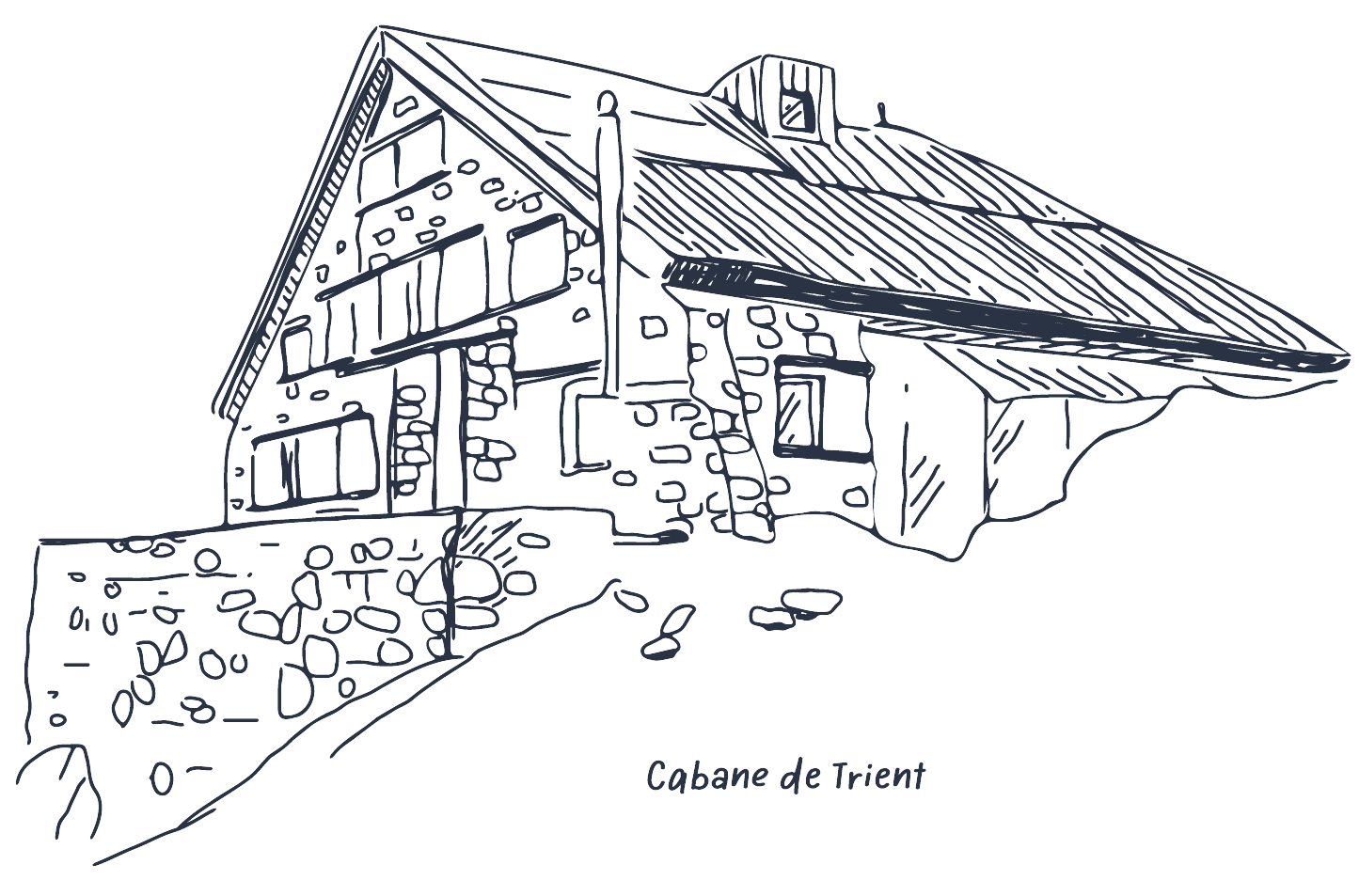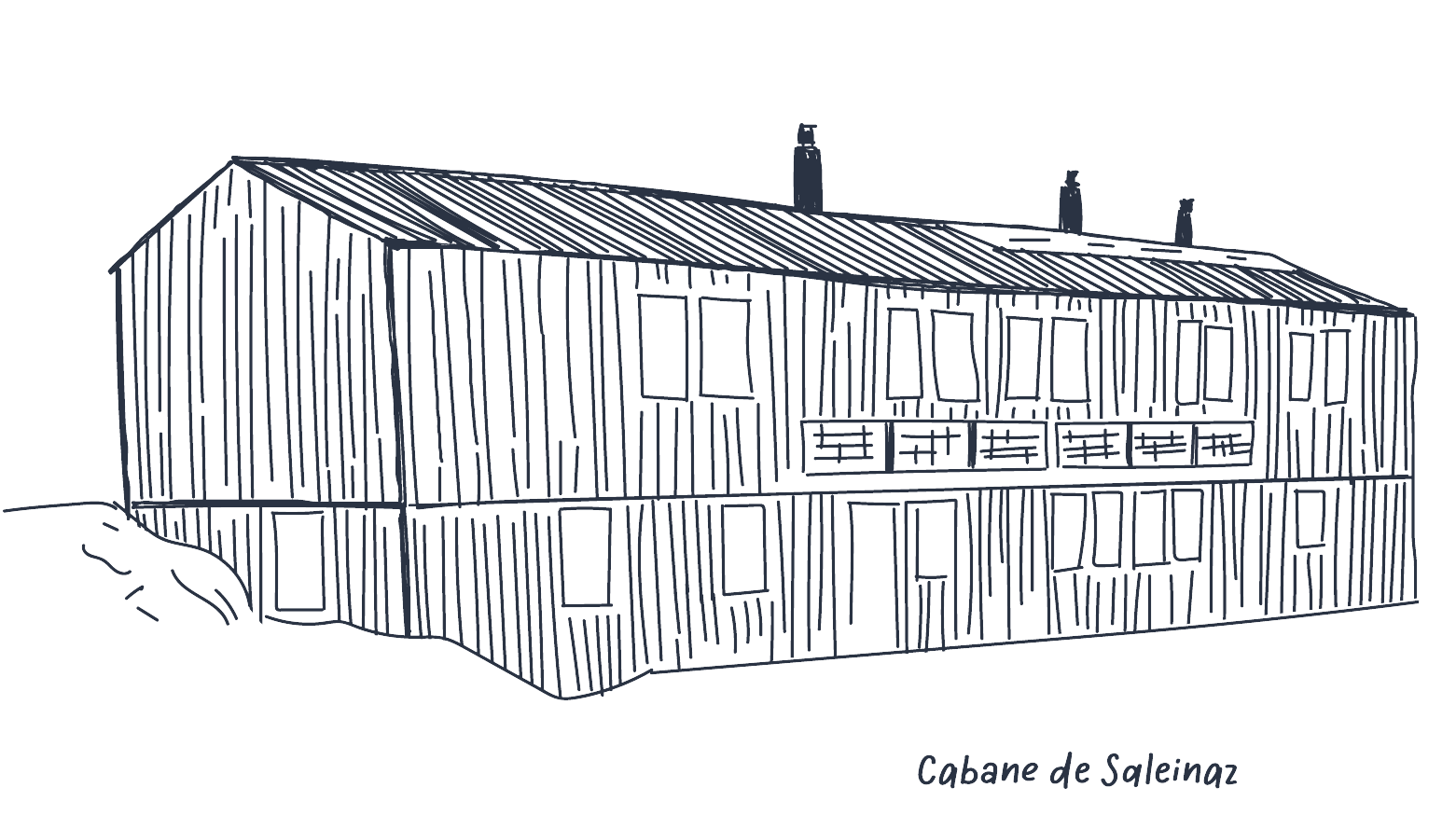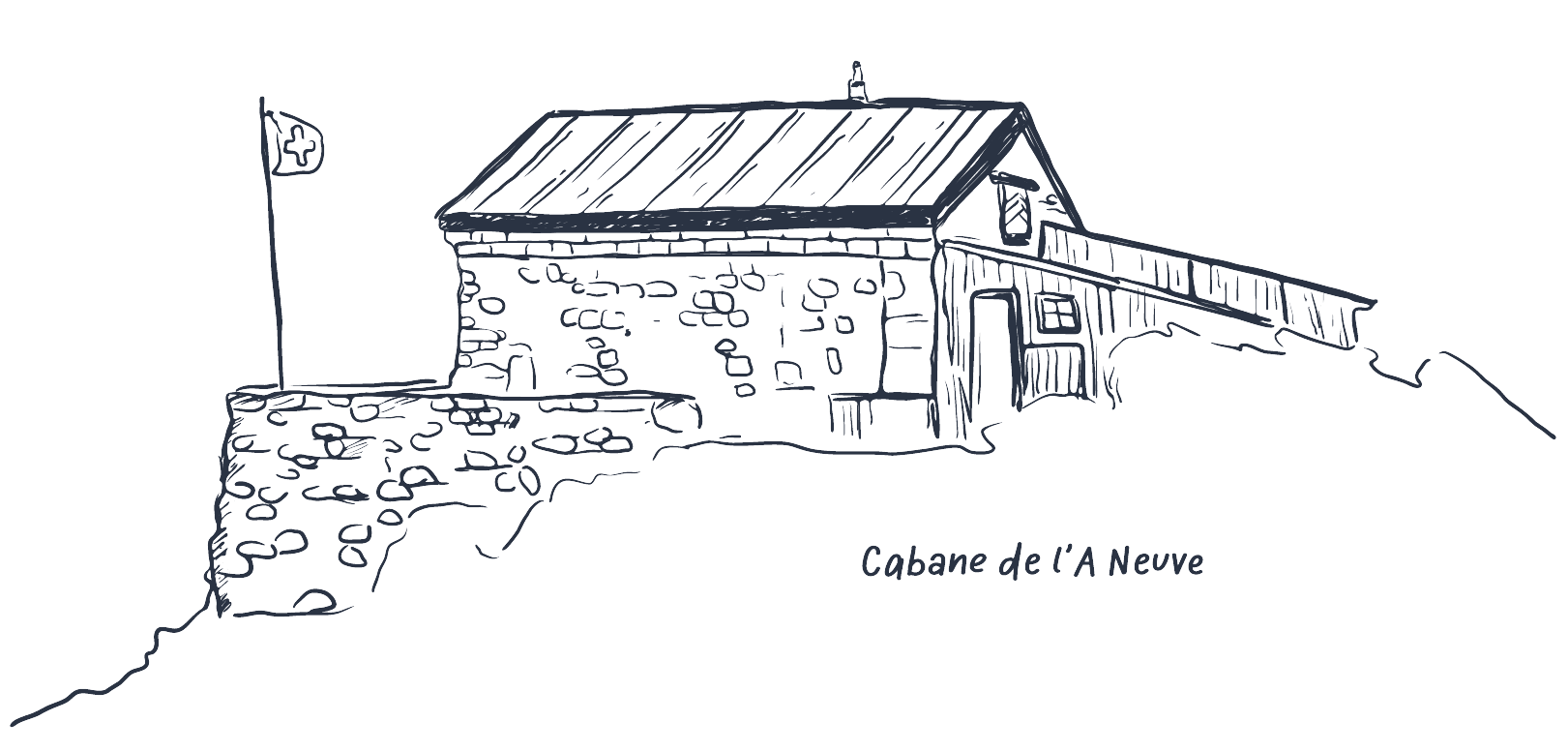THE HUT, MORE THAN JUST A SHELTER

Before mountain huts were built, alpinists spent the night sheltered in a cave or under a rock. These rudimentary bivouacs added an extra challenge to their ascent.
By the 19th century, huts began to be built all over the Alps. In the region, the cabane d’Orny was the first to be built in 1876.
Today, they serve not only as shelters but also as places where mountain enthusiasts meet and share information.

THE SOUL OF THE MOUNTAIN HUT

Originally, the mountain huts were not staffed and were often subject to damage. The arrival of mountain hutkeepers helped protect the buildings and ensure the safety of visitors. Today, the role of a mountain hut keeper also includes welcoming guests, managing accommodation, meals, and advising on itineraries. In other words, the mountain hut keeper is the soul of the hut.
Martine Gabioud embodies this caring presence at the cabane de l’A Neuve, which she has been guarding since 2004. She enjoys sharing this magical place with hikers and alpinists. With her binoculars, she quietly keeps watch over them and the surrounding mountains.
Since she began her role as a hut keeper, she has noticed several changes, including the retreat of glaciers, making some peaks less accessible, and a growing popularity of alpinism.
THE AUTHENTIC CABANE DE L’A NEUVE
Built in 1926, the Cabane de l’A Neuve is located next to the l’A Neuve glacier, which you can see by looking up. Perched on a rocky promontory at an altitude of 2,735 m, it offers a spectacular view of the Dolent (3’819 m). The hut retains its authentic charm with meals cooked over an open wood fire and its 20 beds. Accessible in 3h30 from La Fouly, it is the starting point for several alpinism tours, including the Tour Noir (3’836 m), the Grande Lui (3’508 m) and the Grand Darrey (3’514 m).

| The alpinist Emile Javelle gave his name to a surprising shelter, which one? In 1876, Emile Javelle and three companions spent the night under a rock before making the first ascent of the Tour Noir. This stop, later nicknamed “la Pierre Javelle”, had become a tradition for alpinists climbing this peak. The stone lies along the path leading to the cabane de l’A Neuve. |
| What is artificial climbing? Answer on the next board -> |